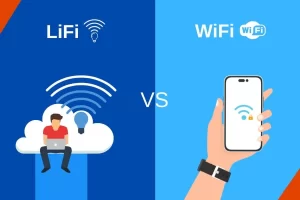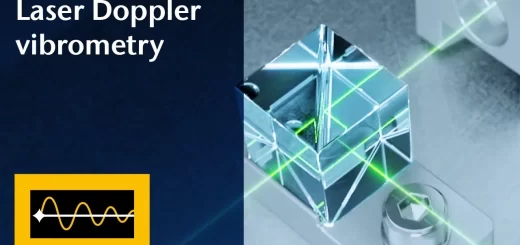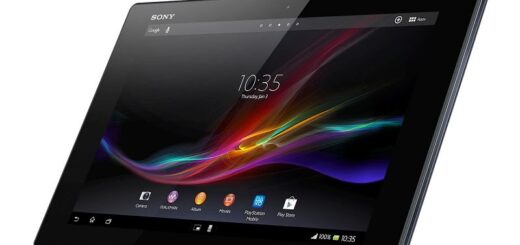Li-Fi importance, Li Fi vs Wi Fi, What is LiFi used for?, Difference between Mi Fi and Li Fi
LiFi (Light Fidelity) uses visible light to transmit data. MiFi (Mobile WiFi) creates a portable Wi-Fi hotspot using cellular data. LiFi promises high speed and secure connections but is limited in range and availability. MiFi offers broader coverage and affordability but with lower speeds and potential security concerns.
Li-Fi (Light Fidelity)
Li-Fi, or Light Fidelity uses light waves to transmit data wirelessly. LiFi boasts high data transfer rates, It offers seamless streaming, ultra-fast downloads, and lag-free video conferencing. LiFi signals are confined to the line of sight. This makes it incredibly secure, and ideal for sensitive environments.
Radio waves used by Wi-Fi are crowded, leading to interference, slowdowns, and lag-free virtual reality experiences. Li-Fi utilizes the vast unused visible light spectrum, offering a congestion-free solution for future wireless needs, and ensuring reliable connectivity.
Li-Fi can achieve data transfer rates exceeding 100 Gigabits per second (Gbps), significantly faster than Wi-Fi, Unlike radio waves, light doesn’t penetrate walls or travel long distances, making data transmission more secure. This is beneficial for sensitive environments such as hospitals, financial institutions, and government offices.
For environments sensitive to electromagnetic waves, such as airplanes, and industrial facilities, Li-Fi offers a safer alternative. Li-Fi signals require a direct line of sight between the transmitter and receiver. Light is not affected by radio waves, making it ideal for crowded environments. LEDs used for transmission are energy-efficient.
Light needs line-of-sight, limiting range compared to Wi-Fi. LiFi technology is still in its early stages and can be expensive. Compatible devices are limited currently.
MiFi (Mobile Wi-Fi)
MiFi is a portable device that creates a Wi-Fi hotspot using cellular data. It provides internet access anywhere you have cellular coverage. It connects multiple devices like laptops and smartphones. It fits in a pocket or bag for easy travel.
MiFi can be slower than broadband internet, depending on cellular data plan. Cellular data plans can be expensive, especially for high usage. Public Wi-Fi hotspots can be vulnerable to hacking.
Difference between Lifi and Mifi
LiFi is ideal for high-speed, secure data transmission in controlled environments like hospitals, factories, and aircraft cabins due to its security and lack of interference. MiFi is perfect for on-the-go internet access when fixed connections are unavailable, and Wi-Fi isn’t readily available, like travel and remote work.
While both Li-Fi and MiFi offer wireless connectivity, Li-Fi (Light Fidelity) uses visible light from LED bulbs to transmit data. MiFi (My Wi-Fi) creates a local Wi-Fi network using cellular data provided by a mobile carrier.
Li-Fi has the potential for much higher data transfer speeds than Wi-Fi (up to 224 Gbps vs. 150 Mbps to 1 Gbps). MiFi Speeds depend on the cellular network and can vary greatly, typically ranging from 10 to 50 Mbps.
Li-Fi offers enhanced security because light waves cannot penetrate through walls, limiting unauthorized access. MiFi uses the same radio waves as Wi-Fi, making it more susceptible to hacking and interference.
Li-Fi has a shorter range compared to Wi-Fi, limited to the line of sight from the LED source. MiFi has a wider range than Li-Fi, covering larger areas, but still limited by the cellular network coverage.
Li-Fi is less prone to interference from other wireless signals because it operates in a different spectrum and light waves don’t overlap with radio waves. MiFi can be affected by interference from other devices operating in the same cellular frequency band.
Li-Fi requires existing LED lighting infrastructure or dedicated Li-Fi lamps. MiFi requires a cellular data plan and a MiFi device. Li-Fi is still in its early stages of development and implementation, not widely available for consumer use. MiFi is a mature technology readily available from various mobile carriers and device manufacturers.
Li-Fi is currently more expensive than traditional Wi-Fi due to the specialized equipment required. MiFi is more affordable and readily available. MiFi costs vary depending on the data plan and device chosen.
Li-Fi is ideal for high-security environments, high-speed data transfer needs, and areas with limited radio wave interference. MiFi is useful for providing internet access on the go, in areas with no wired internet connection, or for backing up existing internet access.
LiFi offers much faster speeds due to the wider bandwidth of light compared to radio waves. MiFi speeds depend on the cellular network, typically ranging from megabits to tens of megabits per second.
LiFi is limited range, typically confined to the same room as the light source due to light’s susceptibility to obstacles. MiFi covers a wider area compared to LiFi, reaching tens of meters depending on the environment.
LiFi is more secure as light signals don’t penetrate walls, making unauthorized access harder. MiFi requires additional security measures like encryption due to the nature of radio waves being more prone to interception.
You can follow science online on YouTube from this link: Science online
You can download the application on Google Play from this link: Science online Apps on Google Play
WiFi, Mi-Fi devices, Advantages of using a portable Wi-Fi Router and How Portable Wi-Fi Routers Work
Li-Fi (Light Fidelity) review, use, advantages, disadvantages and Is LiFi better than WiFi?
MiFi Devices or Mi-Fi hotspots importance, Difference between Mi-Fi & Wi-Fi
What is a MiFi?, Portable Wi-Fi hotspot, Mi-Fi devices advantages & disadvantages
Wi-Fi health dangers and the radiation health effects of routers at home
Mobile Wi-Fi Hotspot features, types, uses and advantages
Mobile Wi-Fi Hotspot, Public Wi-Fi risks and disadvantages




